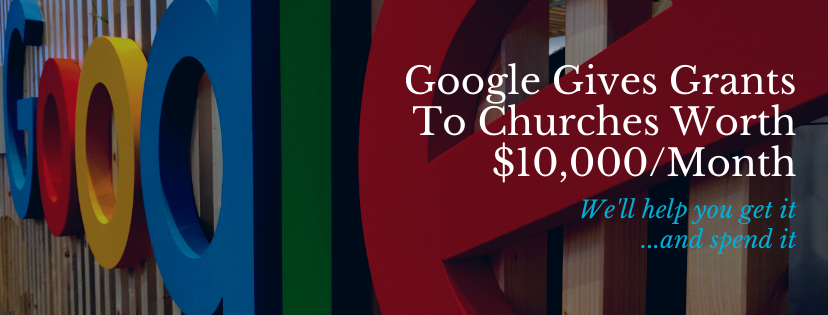Have you ever searched for something on Google and noticed a box appear above the search results with a featured result? Welcome to featured snippets, which are also a great way to get your church noticed.
These are Google’s way of providing the best of the best to searchers and they often take away clicks from the first organic result.
Getting featured isn’t always easy. But, by understanding what these snippets actually are and optimizing your church’s online presence, it is possible.

What Is A Featured Snippet
The most important thing to know about featured snippets is they’re a special result that Google feels best answers a user’s question. As a test, we searched for “what are featured snippets.” After an ad, of course, the first result was a featured snippet from Moz.com that talks about optimizing a site to have a better chance of appearing in that coveted spot.
Often, people refer to featured snippets as answer boxes since they’re designed to answer user queries. Naturally, it’s still kind of a mystery as to exactly how Google chooses who sits in the answer box.
Older posts can become a featured snippet. In fact, in our test, the Moz.com post was from 2017, making it three years old at the time of writing. So, even your church’s older blog posts could be featured if they’re optimized to answer a searcher’s question and Google feels it gives the best answer.
The good news is the optimization techniques you’ll need to use to improve your chances at reaching the top of SERPs (search engine ranking pages) doesn’t just help you with being a featured snippet. It’ll also improve your overall search rank, even at times when no snippet is featured.
As a final note, every query won’t yield a featured snippet. They won’t appear every time a searcher types in a question. And, once a site claims the snippet spot, it can just as easily go to another site if Google’s algorithm shows that another site or post better answers the question later on.
Benefits Of Featured Snippets
If that all sounds like a lot of work just for a chance for your church’s website to show up at the top of Google’s search results, take a look at the benefits first.
First, featured snippets often take away clicks from the first organic result. Ahrefs performed an extensive study based on millions of keywords. In their study, 26% of clicks went to the first search result when no featured snippet was available. However, that number dropped to 19.6% when a snippet was available. The snippet got 8.6% of clicks.
Something promising to take away here is even if your church isn’t featured, you can still get a large number of clicks to your site if you’re still ranking at the top of search results.
However, something else to consider is the fact that featured snippets answer a searcher’s question. The entire answer is often in the box itself so users don’t have to click on any results. So, this can skew results a bit. Even if a user doesn’t click the snippet, they still may remember the site it came from to visit later.
Another study when featured snippets were first growing in popularity showed that organic visits and sessions increased by over 500%. While everyone won’t see as much of an increase, it’s still very promising.
Surprisingly, Ahrefs study showed only around a third of featured snippets rank as the number one organic result. But, over 90% do rank in the top five results.
In January 2020, Google did change the algorithm to prevent duplicate results. This means that if your church is featured, the same link won’t also show up in the organic search results below the snippet. On the other hand, this also provides an extra spot for sites to rank higher.
All of this is to say that featured snippets drive more traffic and exposure to your church’s website. Also, getting into the habit of optimizing for this helps continue raising your rank and increases your chances of being featured.

Types Of Featured Snippets
Snippets aren’t always the same type of thing. This means you have several ways to optimize your content to get featured.
The main types of featured snippets include:
- Answer boxes – While featured snippets are often called answer boxes, the answer box type is completely different. These are the only type that doesn’t include a link to a website. Instead, they’re simply a quick answer, such as a basic definition.
- List – As the name implies, list featured snippets give searchers a list in the snippet box. Usually, sites provide either a summary list in their post or are in a listicle format.
- Paragraph – This is the most common type of featured snippet. The snippet features a short paragraph from the search result that best answers the user’s question.
- Table – Often, you’ll see this in relation to price comparisons, feature comparisons and menus. You may also see them with statistics. You’ll need to specifically format relevant content in a table format using the correct tags in order to be featured.
As you can see, these give your church several different ways to be featured with a link back to the original content.
Increasing Organic Traffic
Featured snippets are often seen as authority content. After all, if Google sees as site as having the best answer to a question, it must be pretty accurate and worth checking out.
As mentioned above, even if a searcher doesn’t click through to visit your church’s website when you are featured, your church’s name is still being shown. Suddenly, your church’s name is in the searcher’s mind as an authority on the subject.
This leads to more organic traffic. People who remember the site return to check it out later. They may then share other pieces of content on social media or even recommend you by traditional word of mouth.
Not only can a snippet help with website traffic, but local traffic as well. The more exposure your church’s site gets through a snippet, the bigger chance of people coming to visit your church in person. It can even lead to more online tithing if your content truly resonates with site visitors.
How Snippets Fit With Voice Search
We’ve already talked about the importance of optimizing your church website for voice search back in April. However, featured snippets tie in with voice searches.
When you type a keyword into Google, you don’t always type like you speak. For instance, if you wanted to optimize your church website for featured snippets, you might type “optimize for featured snippets” or “feature snippets optimization.”
On the other hand, if you say the query versus typing, you speak more conversationally. So, you might say “how do I optimize my website for featured snippets.”
Notice how different the query phrasing is. Snippets are designed to answer questions. So, optimizing your site for voice search also helps optimize for snippets. It’s a win-win for your church website.
Also, if people are searching via their voice, they’re looking for a quick answer. This means they’ll be more likely to hone in on the featured snippet.

Importance Of Answering Questions With Your Site
As you might have noticed, there’s a common element for all featured snippets – they answer questions. This means a great way to optimize your site is to try to answer questions.
While we’ll list a few tools to help out with this at the end of this post, the easiest way to do this is to simply think about what types of questions people might ask. Obviously, you should always answer the basics, such as service hours and location. That also helps with local searches.
Even answering questions in your Google My Business listing is helpful. However, mainly focus on answering questions people may have about your church and faith in general. For instance, you could write a blog post on “how to pray and grow your relationship with God” that could potentially be a featured snippet for the search query “how to pray.”
Using Questions As Keywords
Please use caution when trying to optimize your site by using questions as keywords. You don’t have to fill your site with questions. It’s also not a good idea to try to stuff them into your content.
In the above example, if you wanted to target the question “how to pray,” you might use once or twice in your post. You’d also have it in your title, as part of your post URL and in your post’s meta description. That’s plenty.
Google doesn’t just look for exact question matches. The algorithm also looks at the content itself to see if it actually seems to answer the question. If your church’s content is featured, but then searchers provide feedback (which is an option under featured snippet results) that it’s not a good answer, you’ll lose your spot.
Focus On Good SEO
As a general rule, don’t go crazy trying to optimize for featured snippets. Instead, just focus on good SEO techniques overall. In most cases, featured sites focus more on creating high-quality, useful content than trying to get featured.
They play the long game to continue ranking highly, even if they’re not being featured. It’s a good strategy.
The main thing to focus on is ensuring your content is providing answers to readers’ questions. If you do that, you’re already optimizing for featured snippets.
Write For People, Not Search Engines
Another optimization technique is to write for people, not search engines. Google’s search algorithm already focuses more on conversational content. Why? The content is already optimized to fit the way people search.
You don’t have to be overly technical or try to stuff in as many keywords as possible. Give visitors to your church site what they want – answers and information on growing in their faith.
Not only does this help you optimize content to show up as a featured snippet, but it’ll keep visitors on your site longer. If your content is useful, it’ll also keep them coming back. Both of these things make Google see your site more favorably.

Optimize Based On Type Of Snippet
If you do want to get featured as a specific type of snippet, optimize your content for that. For example, if you want your church’s site to show up as a table snippet, you need content that’s formatted with the <table> tag so it shows as a table. Otherwise, Google won’t see it as a table.
Obviously, don’t format content as a table if it shouldn’t be. Blackhat SEO tactics like this hurt your ranking.
The same goes if you want to have your content featured as a list. A great idea is to format the content as a list. Then, add a summary list either at the beginning or end of your post. It’s a simple strategy, but can boost your chances.
Featured Snippets Tools
You don’t have to do this all on your own. SEO tools are highly useful. First, let’s look at a few premium tools. You don’t need to pay for tools, but they can help.
Ahrefs Site Explorer provides in-depth analysis into backlinks, keywords, traffic and more. You can even research featured snippet opportunities.
The other premium tool you might want to consider is SEMrush. The organic traffic section helps you research the competition and see if you rank for any featured snippets already.
If you’d rather take a free approach, you’ll want to focus more on keyword research. Google Analytics is useful for seeing how your site is performing and how people are finding your site.
Answer The Public is also useful. You enter a keyword and the tool gives you common questions people are asking in relation to the keyword.
However, one of the best tools is the People Also Ask section in Google’s own search results. Enter your chosen keyword and then take a look at questions people ask in relation to that one. These are great opportunities to answer additional questions and get new blog post ideas.
An easy to use church website is the first step toward seeing your church featured in a featured snippet. Contact us today to learn how we can help.




